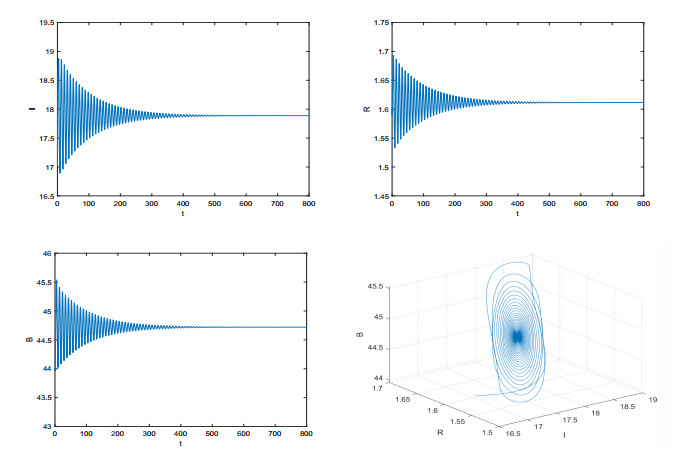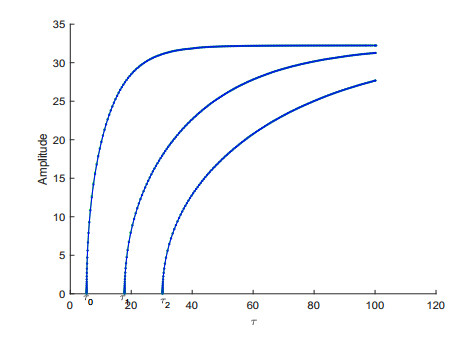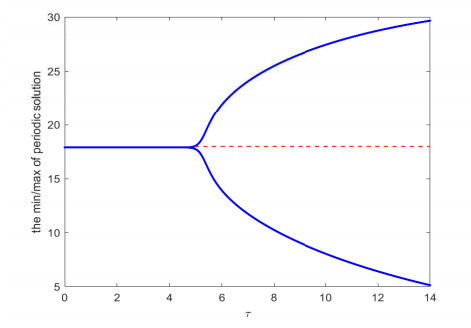1.
Introduction and preliminaries
Ostrowski proved the following interesting and useful integral inequality in 1938, see [18] and [15, page:468].
Theorem 1.1. Let f:I→R, where I⊆R is an interval, be a mapping differentiable in the interior I∘ of I and let a,b∈I∘ with a<b. If |f′(x)|≤M for all x∈[a,b], then the following inequality holds:
for all x∈[a,b]. The constant 14 is the best possible in sense that it cannot be replaced by a smaller one.
This inequality gives an upper bound for the approximation of the integral average 1b−a∫baf(t)dt by the value of f(x) at point x∈[a,b]. In recent years, such inequalities were studied extensively by many researchers and numerous generalizations, extensions and variants of them appeared in a number of papers, see [1,2,10,11,19,20,21,22,23].
A function f:I⊆R→R is said to be convex (AA−convex) if the inequality
holds for all x,y∈I and t∈[0,1].
In [4], Anderson et al. also defined generalized convexity as follows:
Definition 1.1. Let f:I→(0,∞) be continuous, where I is subinterval of (0,∞). Let M and N be any two Mean functions. We say f is MN-convex (concave) if
for all x,y∈I.
Recall the definitions of AG−convex functions, GG−convex functions and GA− functions that are given in [16] by Niculescu:
The AG−convex functions (usually known as log−convex functions) are those functions f:I→(0,∞) for which
i.e., for which logf is convex.
The GG−convex functions (called in what follows multiplicatively convex functions) are those functions f:I→J (acting on subintervals of (0,∞)) such that
The class of all GA−convex functions is constituted by all functions f:I→R (defined on subintervals of (0,∞)) for which
The article organized three sections as follows: In the first section, some definitions an preliminaries for Riemann-Liouville and new fractional conformable integral operators are given. Also, some Ostrowski type results involving Riemann-Liouville fractional integrals are in this section. In the second section, an identity involving new fractional conformable integral operator is proved. Further, new Ostrowski type results involving fractional conformable integral operator are obtained by using some inequalities on established lemma and some well-known inequalities such that triangle inequality, Hölder inequality and power mean inequality. After the proof of theorems, it is pointed out that, in special cases, the results reduce the some results involving Riemann-Liouville fractional integrals given by Set in [27]. Finally, in the last chapter, some new results for AG-convex functions has obtained involving new fractional conformable integrals.
Let [a,b] (−∞<a<b<∞) be a finite interval on the real axis R. The Riemann-Liouville fractional integrals Jαa+f and Jαb−f of order α∈C (ℜ(α)>0) with a≥0 and b>0 are defined, respectively, by
and
where Γ(t)=∫∞0e−xxt−1dx is an Euler Gamma function.
We recall Beta function (see, e.g., [28, Section 1.1])
and the incomplete gamma function, defined for real numbers a>0 and x≥0 by
For more details and properties concerning the fractional integral operators (1.5) and (1.6), we refer the reader, for example, to the works [3,5,6,7,8,9,14,17] and the references therein. Also, several new and recent results of fractional derivatives can be found in the papers [29,30,31,32,33,34,35,36,37,38,39,40,41,42].
In [27], Set gave some Ostrowski type results involving Riemann-Liouville fractional integrals, as follows:
Lemma 1.1. Let f:[a,b]→R be a differentiable mapping on (a,b) with a<b. If f′∈L[a,b], then for all x∈[a,b] and α>0 we have:
where Γ(α) is Euler gamma function.
By using the above lemma, he obtained some new Ostrowski type results involving Riemann-Liouville fractional integral operators, which will generalized via new fractional integral operators in this paper.
Theorem 1.2. Let f:[a,b]⊂[0,∞)→R be a differentiable mapping on (a,b) with a<b such that f′∈L[a,b]. If |f′| is s−convex in the second sense on [a,b] for some fixed s∈(0,1] and |f′(x)|≤M, x∈[a,b], then the following inequality for fractional integrals with α>0 holds:
where Γ is Euler gamma function.
Theorem 1.3. Let f:[a,b]⊂[0,∞)→R be a differentiable mapping on (a,b) with a<b such that f′∈L[a,b]. If |f′|q is s−convex in the second sense on [a,b] for some fixed s∈(0,1],p,q>1 and |f′(x)|≤M, x∈[a,b], then the following inequality for fractional integrals holds:
where 1p+1q=1, α>0 and Γ is Euler gamma function.
Theorem 1.4. Let f:[a,b]⊂[0,∞)→R be a differentiable mapping on (a,b) with a<b such that f′∈L[a,b]. If |f′|q is s−convex in the second sense on [a,b] for some fixed s∈(0,1],q≥1 and |f′(x)|≤M, x∈[a,b], then the following inequality for fractional integrals holds:
where α>0 and Γ is Euler gamma function.
Theorem 1.5. Let f:[a,b]⊂[0,∞)→R be a differentiable mapping on (a,b) with a<b such that f′∈L[a,b]. If |f′|q is s−concave in the second sense on [a,b] for some fixed s∈(0,1],p,q>1, x∈[a,b], then the following inequality for fractional integrals holds:
where 1p+1q=1, α>0 and Γ is Euler gamma function.
Some fractional integral operators generalize the some other fractional integrals, in special cases, as in the following integral operator. Jarad et. al. [13] has defined a new fractional integral operator. Also, they gave some properties and relations between the some other fractional integral operators, as Riemann-Liouville fractional integral, Hadamard fractional integrals, generalized fractional integral operators etc., with this operator.
Let β∈C,Re(β)>0, then the left and right sided fractional conformable integral operators has defined respectively, as follows;
The results presented here, being general, can be reduced to yield many relatively simple inequalities and identities for functions associated with certain fractional integral operators. For example, the case α=1 in the obtained results are found to yield the same results involving Riemann-Liouville fractional integrals, given before, in literatures. Further, getting more knowledge, see the paper given in [12]. Recently, some studies on this integral operators appeared in literature. Gözpınar [13] obtained Hermite-Hadamard type results for differentiable convex functions. Also, Set et. al. obtained some new results for quasi−convex, some different type convex functions and differentiable convex functions involving this new operator, see [24,25,26]. Motivating the new definition of fractional conformable integral operator and the studies given above, first aim of this study is obtaining new generalizations.
2.
Main results
Lemma 2.1. Let f:[a,b]→R be a differentiable function on (a,b) with a<b and f′∈L[a,b]. Then the following equality for fractional conformable integrals holds:
where α,β>0 and Γ is Euler Gamma function.
Proof. Using the definition as in (1.8) and (1.9), integrating by parts and and changing variables with u=tx+(1−t)a and u=tx+(1−t)b in
respectively, then we have
similarly
By multiplying I1 with (x−a)αβ+1b−a and I2 with (b−x)αβ+1b−a we get desired result.
Remark 2.1. Taking α=1 in Lemma 2.1 is found to yield the same result as Lemma 1.1.
Theorem 2.1. Let f:[a,b]→R be a differentiable function on (a,b) with a<b and f′∈L[a,b]. If |f′| is convex on [a,b] and |f′(x)|≤M with x∈[a,b], then the following inequality for fractional conformable integrals holds:
where α,β>0, B(x,y) and Γ are Euler beta and Euler gamma functions respectively.
Proof. From Lemma 2.1 we can write
Notice that
Using the fact that, |f′(x)|≤M for x∈[a,b] and combining (2.3) with (2.2), we get desired result.
Remark 2.2. Taking α=1 in Theorem 3.1 and s=1 in Theorem 1.2 are found to yield the same results.
Theorem 2.2. Let f:[a,b]→R be a differentiable function on (a,b) with a<b and f′∈L[a,b]. If |f′|q is convex on [a,b], p,q>1 and |f′(x)|≤M with x∈[a,b], then the following inequality for fractional conformable integrals holds:
where 1p+1q=1, α,β>0, B(x,y) and Γ are Euler beta and Euler gamma functions respectively.
Proof. By using Lemma 2.1, convexity of |f′|q and well-known Hölder's inequality, we have
Notice that, changing variables with x=1−(1−t)α, we get
Since |f′|q is convex on [a,b] and |f′|q≤Mq, we can easily observe that,
As a consequence, combining the equality (2.6) and inequality (2.7) with the inequality (2.5), the desired result is obtained.
Remark 2.3. Taking α=1 in Theorem 3.2 and s=1 in Theorem 1.3 are found to yield the same results.
Theorem 2.3. Let f:[a,b]→R be a differentiable function on (a,b) with a<b and f′∈L[a,b]. If |f′|q is convex on [a,b], q≥1 and |f′(x)|≤M with x∈[a,b], then the following inequality for fractional conformable integrals holds:
where α,β>0, B(x,y) and Γ are Euler Beta and Euler Gamma functions respectively.
Proof. By using Lemma 2.1, convexity of |f″|q and well-known power-mean inequality, we have
Since |f′|q is convex and |f′|q≤Mq, by using (2.3) we can easily observe that,
As a consequence,
This means that, the desired result is obtained.
Remark 2.4. Taking α=1 in Theorem 3.2 and s=1 in Theorem 1.4 are found to yield the same results.
Theorem 2.4. Let f:[a,b]→R be a differentiable function on (a,b) with a<b and f′∈L[a,b]. If |f′|q is concave on [a,b], p,q>1 and |f′(x)|≤M with x∈[a,b], then the following inequality for fractional conformable integrals holds:
where 1p+1q=1, α,β>0, B(x,y) and Γ are Euler Beta and Gamma functions respectively.
Proof. By using Lemma 2.1 and well-known Hölder's inequality, we have
Since |f″|q is concave, it can be easily observe that,
Notice that, changing variables with x=1−(1−t)α, as in (2.6), we get,
As a consequence, substituting (2.14) and (2.15) in (2.13), the desired result is obtained.
Remark 2.5. Taking α=1 in Theorem 3.2 and s=1 in Theorem 1.5 are found to yield the same results.
3.
New inequalities for AG-convex functions
Some new inequalities for AG-convex functions has obtained in this chapter. For the simplicity, we will denote |f′(x)||f′(a)|=ω and |f′(x)||f′(b)|=ψ.
Theorem 3.1. Let f:[a,b]→R be a differentiable function on (a,b) with a<b and f′∈L[a,b]. If |f′| is AG−convex on [a,b], then the following inequality for fractional conformable integrals holds:
where α>0,β>1, Re(lnω)<0∧Re(lnψ)<0∧Re(αβ)>−1,B(x,y),Γ(x,y) and Γ are Euler Beta, Euler incomplete Gamma and Euler Gamma functions respectively.
Proof. From Lemma 2.1 and definition of AG−convexity, we have
By using the fact that |1−(1−t)α|β≤1−|1−t|αβ for α>0,β>1, we can write
By computing the above integrals, we get the desired result.
Theorem 3.2. Let f:[a,b]→R be a differentiable function on (a,b) with a<b and f′∈L[a,b]. If |f′|q is AG−convex on [a,b] and p,q>1, then the following inequality for fractional conformable integrals holds:
where 1p+1q=1, α,β>0, B(x,y) and Γ are Euler beta and Euler gamma functions respectively.
Proof. By using Lemma 2.1, AG−convexity of |f′|q and well-known Hölder's inequality, we can write
By a simple computation, one can obtain
This completes the proof.
Corollary 3.1. In our results, some new Ostrowski type inequalities can be derived by choosing |f′|≤M. We omit the details.
Conflict of interest
The authors declare that no conflicts of interest in this paper.

















 DownLoad:
DownLoad: